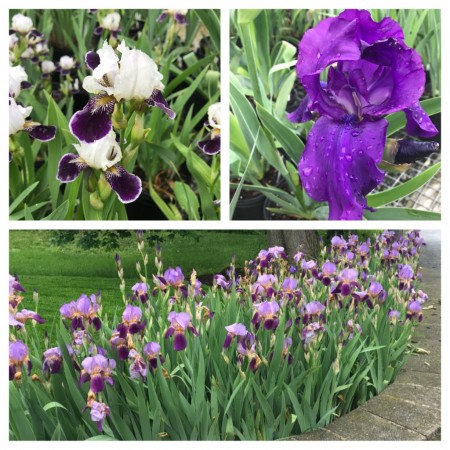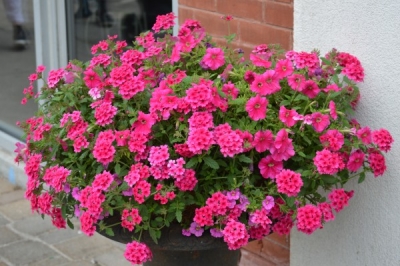If you onlyvisit your favorite greenhouse inApril or early May there are several annuals that you probably did not even notice. These are heat-loving plants that bloom profusely when the mercury climbs when many cool season flowers like pansies and lobelia are petering out. These annuals can be depended on to give bright color until frost.
The first is probably the best known. Lantana is a tropical sub-shrub. When we lived in Florida, it was a hedge outside my office, but here it is an annual. Breeders have refined the habit and broadened the color range. There are mounding and spreading forms in shades of yellow, pink, red, purple and orange. The flower clusters often have more than one color per cluster. They are also nectar-heavy making them a favorite for butterflies and hummingbirds. Another distinctive feature is the fragrant foliage. When rubbed between my fingers, it reminds me of citrus. Because of the oils in the foliage, it also repels mosquitoes and other bothersome pests.
It is drought tolerant and thrives in full sun with little supplemental irrigation once established. Good for pots, baskets or the front to middle of flower beds.
Summer snapdragons, or angelonia is a great upright annual with flowers in spikes. It comes in white, pink, blueish and purple. This plant was first introduced about 20 years ago and made a great home cut flower. Since then breeders shrunk it down to be more of a bedding plant at the expense of taller sturdier stems. In the last few years more vigorous varieties with larger flowers have come on the market making it suitable for cutting once again. Flowers have good vase life and make excellent mid-tall components in containers or beds.
Pentas or butterfly flower is another tropical with nectar-laden tubular cluster of flowers sure to attract hummingbirds and butterflies to your garden. These plants reach 18-30” depending on the variety and are great additions to a sunny perennial border to add some color between seasons. Bold red, bright pink, lavender or white flowers mix well with most color schemes.
For the shade, begonias can’t be beat. A new series of Begonia boliviensis has really impressed me the last two summers. ‘Bossa Nova’ begonias have large bell-shaped flowers in shades of red, yellow, orange and blush-white. This plant has an upright then arching habit, making it a nice component in baskets or containers. I have some white ones in a container on my front porch mixed with white torenia and purple foliage Persian shield and alternanthera. The contrast is nice for my shady porch. This series is related to the orange ‘Bonfire’ begonia that we have been growing for several years. They can be brought indoors over the winter and kept for next season.
All of these plants do best planted well after the last frost is past. We have noticed they really don’t seem to grow until temperatures are in the 70s and 80s so it is best to wait on planting them.
If your baskets need a little sprucing up, or your perennial border is between seasons, try some of these heat-lovers for a pop of color that will bloom through the worst the summer has to throw at them.
Photo above: Begonia boliviensis 'Bossa Nova Orange'

 The monarchs are back. A few days ago I found eggs on some of the milkweed around the farm, but I saw the first adult on Tuesday.
The monarchs are back. A few days ago I found eggs on some of the milkweed around the farm, but I saw the first adult on Tuesday.
 The weather has finally broken and Mother’s Day is behind us. I don’t even want to speculate on how many plants and flowers were purchased in the last week around the country, but chances are good if you are a mother, or have one, you bought or received some recently.
The weather has finally broken and Mother’s Day is behind us. I don’t even want to speculate on how many plants and flowers were purchased in the last week around the country, but chances are good if you are a mother, or have one, you bought or received some recently.